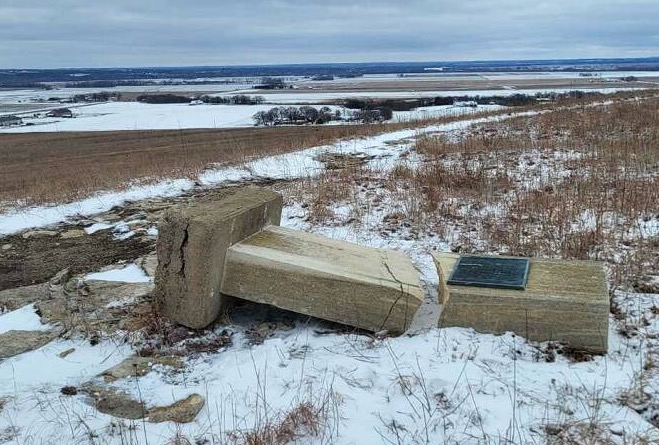
Hilltop Monument destroyed
On February 14th visitors to the Mount Mitchell Heritage Prairie Park south of Wamego discovered that the hilltop monument to Captain William Mitchell and the Beecher Bible and Rifle Colony had been toppled and destroyed. The nine-foot-tall limestone monolith had been erected in 1956 by the Kansas State Historical Society during the centennial year of the colony’s arrival in Kansas Territory. Its placement had been one of the stipulations of the property’s transfer to state ownership by Captain Mitchell’s son Will three years earlier. Another stipulation of the gift was that the property would become a state park dedicated to Mitchell and the abolitionists of the Connecticut Colony.
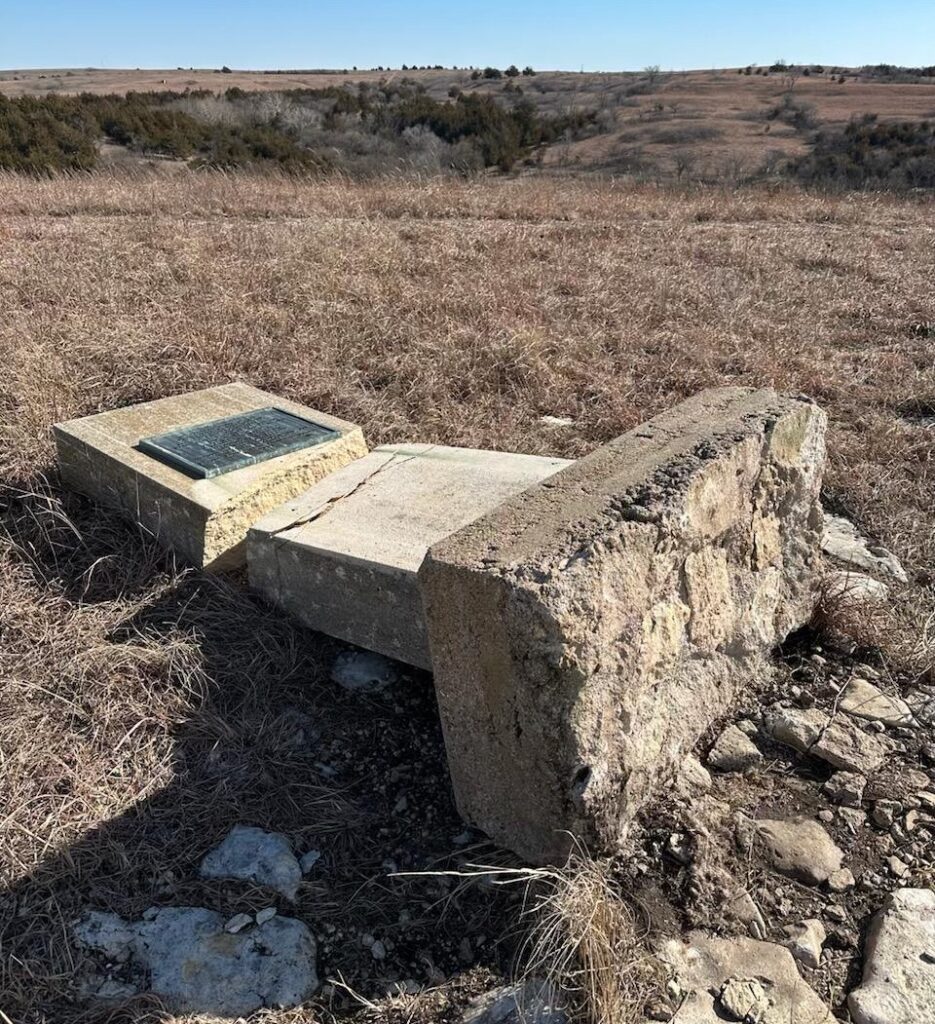

After her brother’s death, Maude Mitchell, daughter of Captain and Mary Mitchell, contracted with Joe Beaudet of the Manhattan Monument Company to erect the marker. She accompanied Beaudet and his crew to the top of the hill expressing to him that she hoped the state would create the park she and her brother had envisioned. She died the following year.
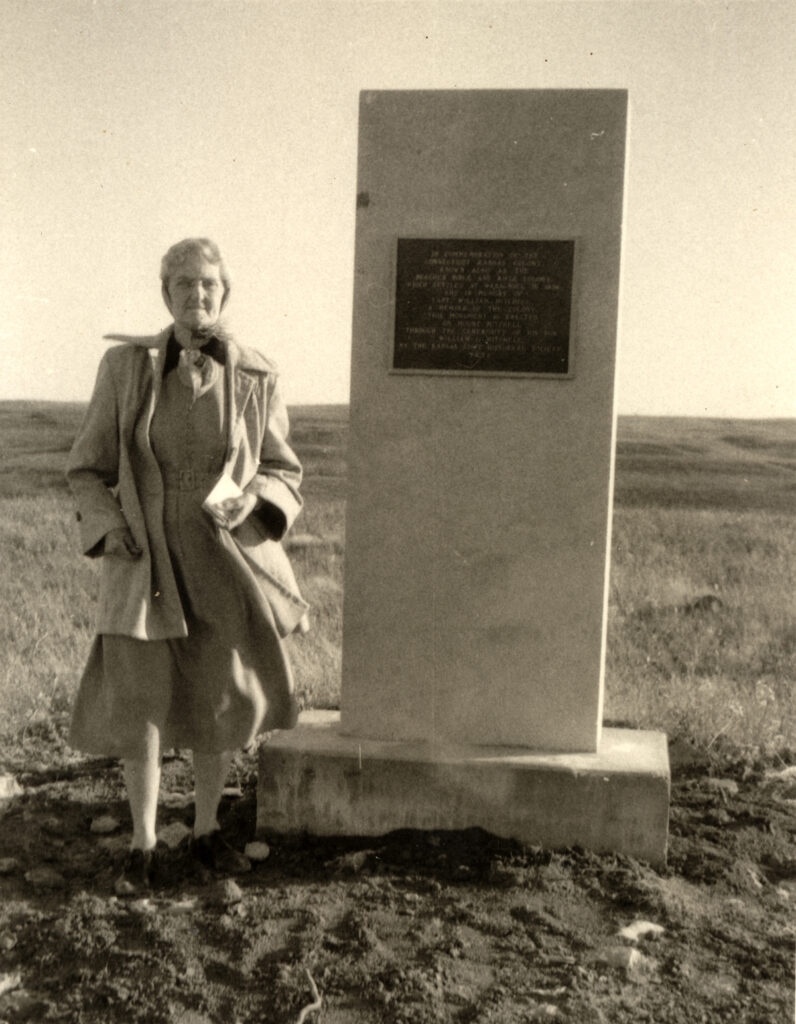
For many reasons, the state never developed a park, and in 2002 the historical society began plans to return the property to Will Mitchell’s heirs. Local residents, now known as the Mount Mitchell Prairie Guards, contacted the Mitchell family and received their permission to pursue the property’s transfer to local control so that they could create the park their grandfather had envisioned.
The Kansas Legislature made the transfer in April of 2006 and since that time the Prairie Guards have raised over one million dollars to develop the Park. Its size has grown from 30 to 164 acres. Construction of a new main entrance and parking area at 29000 Mount Mitchell Road began last July and is expected to be completed in time for the Guard’s 11th annual Mitchell Farm and Prairie Celebration on June 22nd.
Other improvements include the installation of water, power, and WIFI connectivity, and a restroom as well as an accessible path to the swales of the Topeka Fort Riley Road, used by the westernmost route of the Underground Railroad. An interpretive kiosk will inform visitors of the many stories associated with this landscape. It will begin with the ancient Permian seas that created the Flint Hills topography, the appearance of a glacier that brought Sioux quartzite boulders to the area, the first indigenous people to live here, and continue to the present day.
The bronze plaque from the toppled monument has been salvaged and will be incorporated into a new monument that will also acknowledge the many donors who have fulfilled Will Mitchell’s dream to create a park that honors the pioneers who made Kansas a state free from slavery.
The Prairie Guards are currently working with the Kansas Department of Transportation and local officials to include a bike/walking path as part of the final phase of Highway 99’s reconstruction. The trail will run from the Miller Family Nature Preserve south of the Kansas River Bridge to the northwest corner of the Mount Mitchell Heritage Prairie Park at the junction of Highways K99 and K18. This route is included in the Flint Hills Metropolitan Planning Organization’s Master Trail Plan and will connect Mount Mitchell with the Kansas River National Water Trail and the Great Plains Gravel Route.
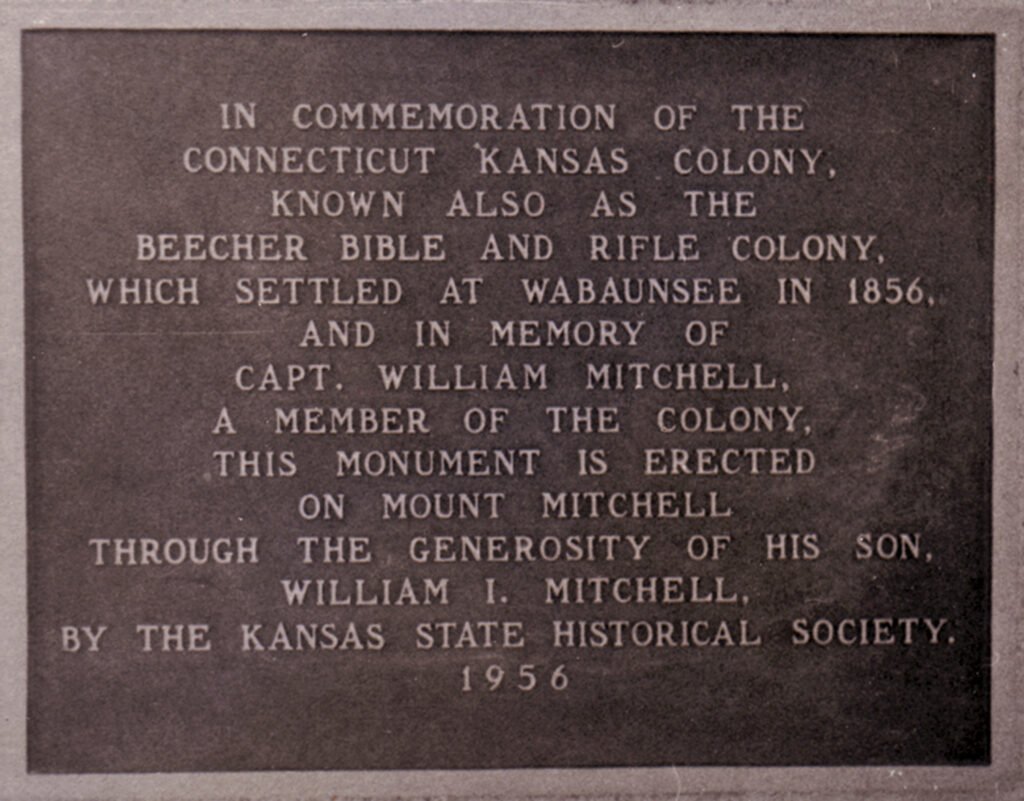
According to cell phone data, Mount Mitchell received 3,220 visitors in 2022. The majority of visitors came from Pottawatomie, Riley, and Wabaunsee Counties. Tax-deductible contributions to assist in replacing the destroyed monument or for other improvements to the park can be made by check to Mount Mitchell Prairie Guards, PO Box 136, Wamego KS 66547 or click here to make your donation!

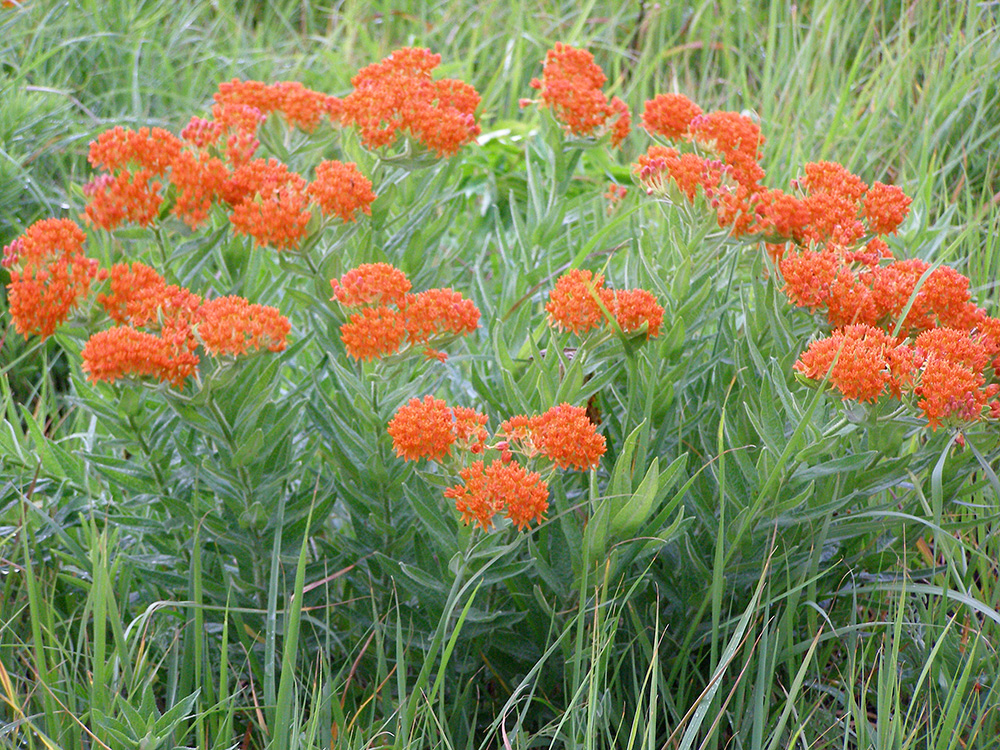
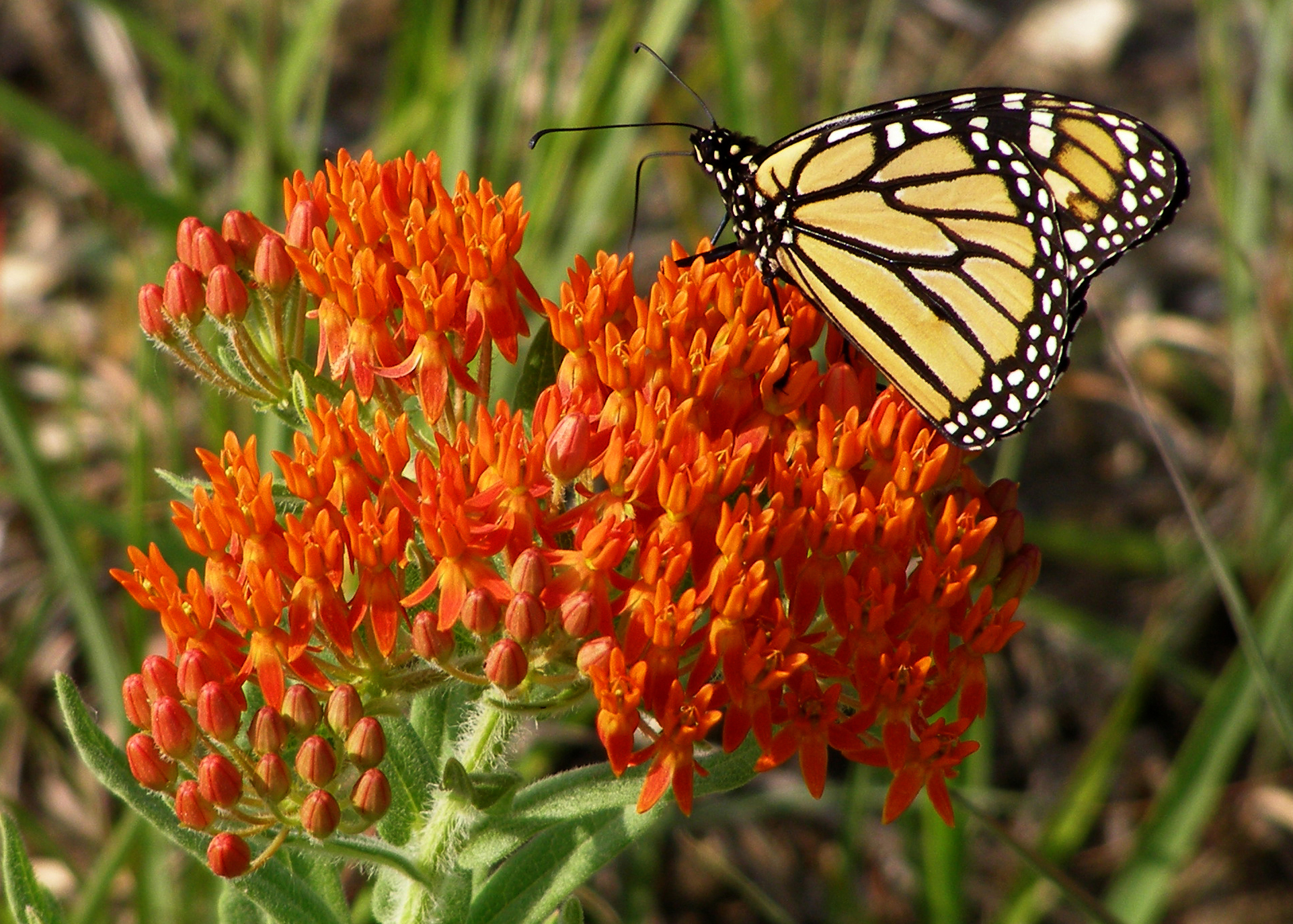
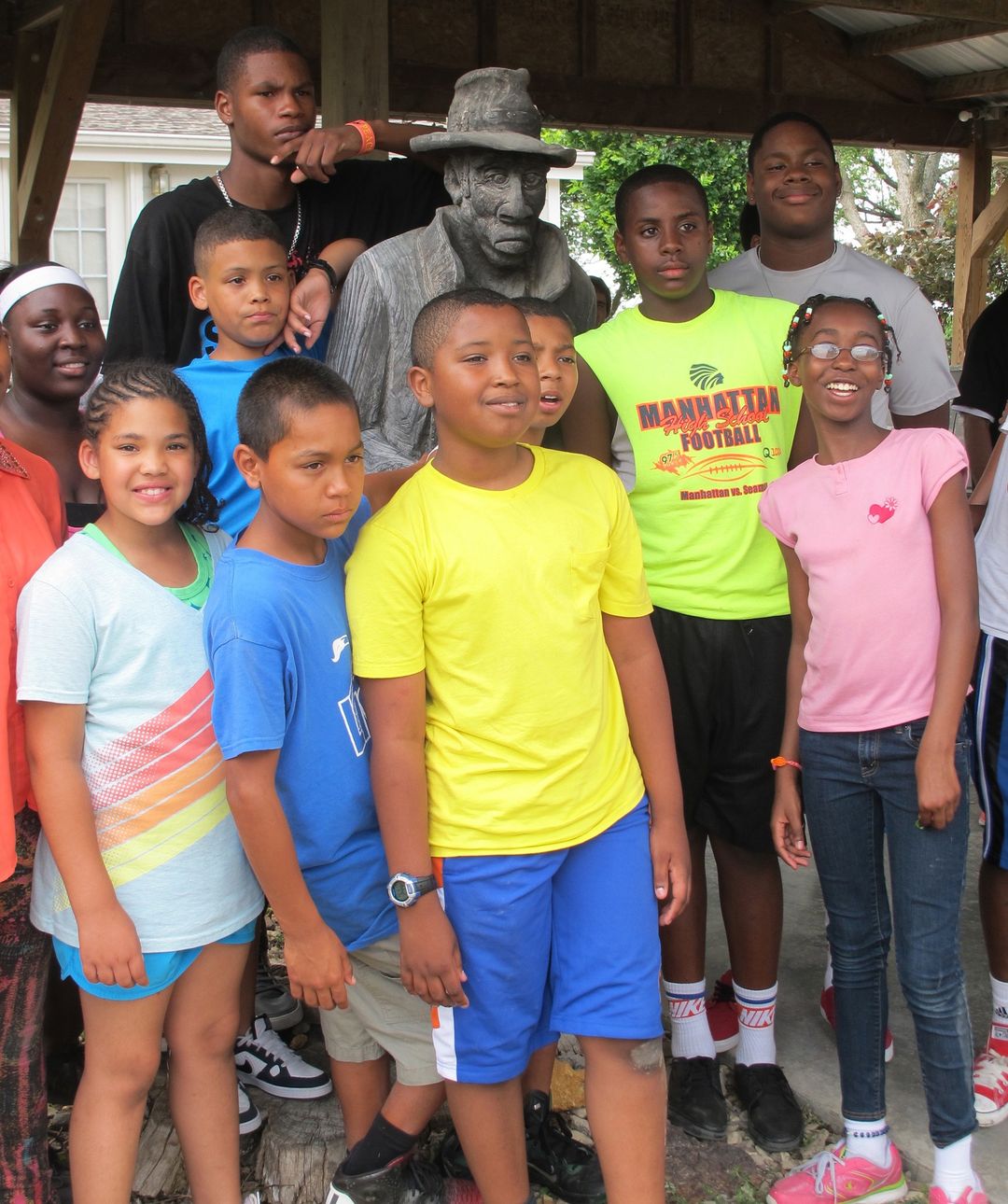

Recent Comments